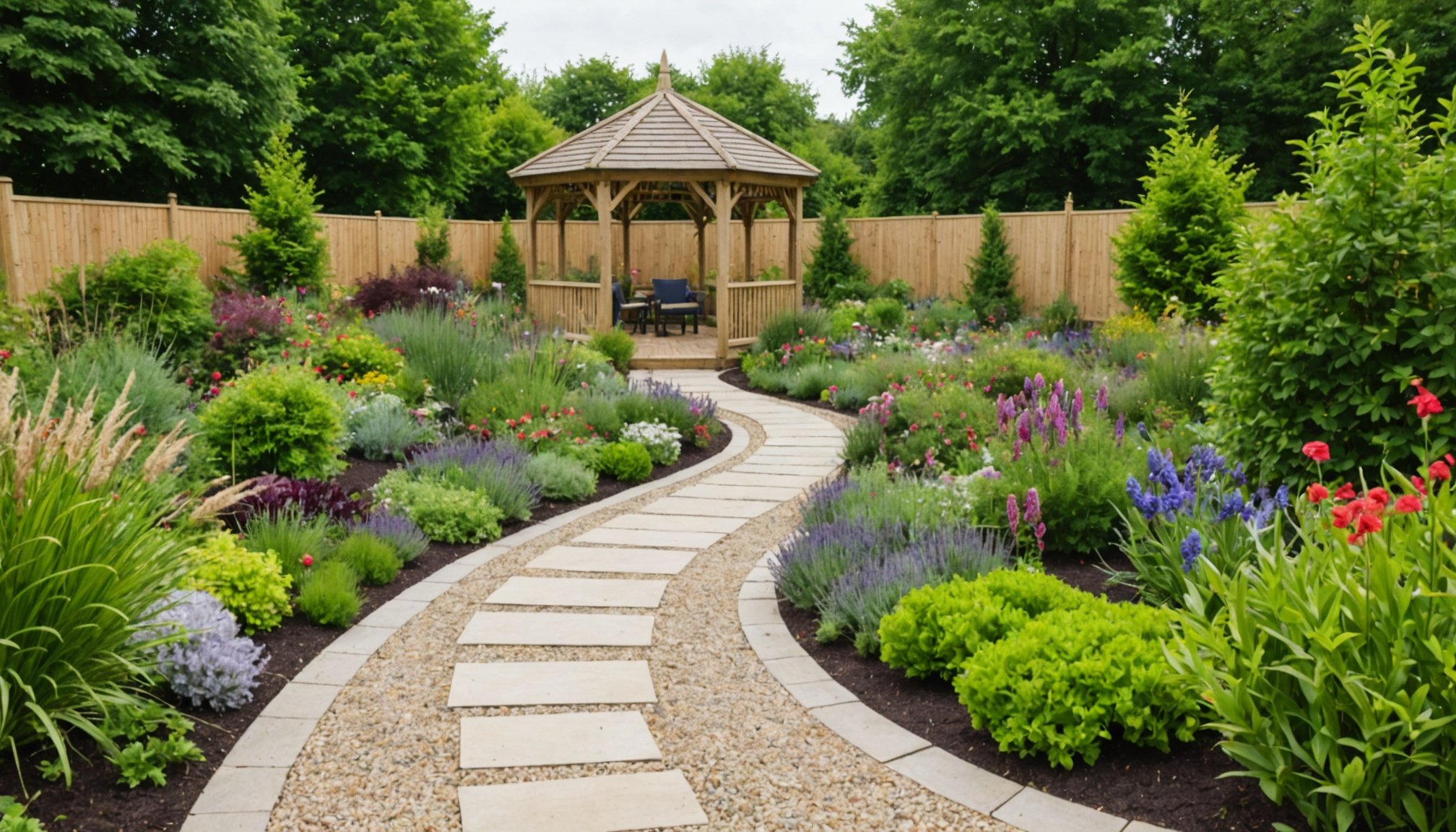Essential elements for a relaxing sensory garden in the UK
Creating a sensory garden design UK demands a clear focus on relaxation and therapeutic benefits. The primary purpose of a relaxation garden is to stimulate all five senses—sight, sound, touch, smell, and taste—while offering a calming environment. This purposeful approach ensures the garden contributes to mental wellness and stress relief.
When crafting sensory garden design UK, it is crucial to consider the unique UK climate. Selecting plants and materials that thrive in cooler, wetter conditions supports year-round enjoyment. For instance, evergreens provide visual interest in winter, while herbs like lavender and rosemary offer aromatic appeal in warmer months.
Also to see : How Can You Transform Your UK Garden into a Haven for Pollinators?
To maximize sensory garden benefits, elements like textured foliage, gentle water features, and fragrant flowers are essential. Seating areas invite visitors to pause and absorb the surroundings, enhancing relaxation. Including edible plants such as strawberries or mint adds a delightful taste experience. Thoughtful layout and accessible paths ensure the garden is welcoming to all users.
Embracing these principles offers a comprehensive approach to creating a vibrant, multisensory space that enriches well-being through nature’s calming influence.
Also to discover : How Can Your UK Home Garden Adapt to Climate Change?
Step-by-step guide to planning your sensory garden layout
Planning a garden layout UK requires purposeful steps that focus on maximizing sensory stimulation. Begin by assessing your garden’s size, soil quality, sunlight exposure, and prevailing winds. This assessment is crucial for effective sensory garden planning, as it informs plant selection and placement.
Next, create a detailed map dividing the garden into distinct garden zoning areas. Assign zones based on sensory elements you want to highlight—touch, smell, sight, sound, and taste. For example, a fragrant herb zone might sit in a sunny spot, while calming water features are strategically placed where relaxation is prioritized.
Integrate clear pathways that guide visitors naturally through these zones. Consider wide, accessible routes made from natural materials to enhance tactile experiences. Add comfortable seating at key focal points to encourage lingering and enjoyment. Focal points, such as sculptures or seasonal plants, create visual interest and anchor your garden design.
This approach not only fosters a rich sensory environment but also ensures your sensory garden layout functions smoothly, offering ease and comfort for all who explore it.
Choosing UK-suitable plants and features for every sense
Creating a multisensory garden in the UK means selecting plants and features that engage all five senses. When considering sensory plants UK, visual interest is key. Choose species offering vibrant colour, diverse shapes, and seasonal variety to ensure the garden delights year-round. Think of purple lavender, silver foliage of artemisia, and the bright berries of holly for winter.
Fragrant and tactile choices add depth. Herbs like rosemary and thyme provide scent and texture, while lamb’s ear offers soft, palpable leaves for touch. Flowers such as gardenia and jasmine fill the air with captivating aromas, creating a calming atmosphere.
For sound and movement, incorporating ornamental grasses like miscanthus rustling in the breeze or gentle water features adds soothing auditory elements. These features attract birds and insects, enhancing the garden’s liveliness and sensory richness.
Finally, edible options contribute both taste and interaction. Fruit bushes like blackcurrants or herbs like mint invite engagement and reward gardeners with fresh flavours. Designing with these sensory elements ensures a garden that captivates and connects visitors with nature on multiple levels.
Materials and structures to enhance sensory relaxation
Creating a garden that promotes sensory relaxation involves thoughtful choices in materials and structures. For those designing a garden in the UK, selecting appropriate garden materials UK ensures durability and safety throughout the seasons. Paths should be made of smooth, non-slip surfaces like resin-bound gravel or rubberized paving, which are not only resilient but comfortable to walk on. Such choices support sensory pathways that encourage barefoot exploration and tactile engagement.
Benches and seating areas need to balance comfort with accessibility—sturdy wooden or composite benches at varying heights accommodate different mobility needs, fostering an inclusive environment. Raised beds, filled with fragrant herbs or textured plants, invite touch and smell, enhancing sensory stimulation while reducing physical strain.
Accessibility is paramount in garden design. Thoughtful layouts maintain a minimum width for wheelchairs and walkers, avoid abrupt changes in surface levels, and include handrails where necessary. Incorporating clearly defined sensory zones with diverse materials and structures supports relaxation by stimulating sight, touch, and smell in a safe, accessible setting. By integrating these elements, gardens become welcoming spaces for all users, combining beauty, practicality, and sensory enrichment.
Maintenance tips for a thriving and soothing sensory garden
Maintaining a sensory garden tailored to UK conditions requires focused care that encourages plants to thrive and keeps sensory features inviting. Regular watering suited to the UK’s often damp climate is crucial—while many sensory plants are hardy, they benefit from consistent moisture without waterlogging. Select low-maintenance gardening UK strategies such as mulching to retain soil moisture and reduce weeds, ensuring the sensory plants stay healthy with minimal effort.
To keep sensory features fresh and accessible, prune aromatic herbs and tactile plants frequently. This promotes new growth, enhancing scents and textures that stimulate the senses. Paths should be kept clear for safe, easy access, especially when areas encourage barefoot walking or physical interaction with plants.
Long-term success lies in simplicity—choose plants that bloom at different times for continuous color and scent, and use natural materials that blend with the garden’s environment. Implementing these simplified maintenance techniques ensures your sensory garden remains a serene place for relaxation, engaging the senses without demanding extensive upkeep. By applying these methods, your garden can flourish as a peaceful retreat year-round.









